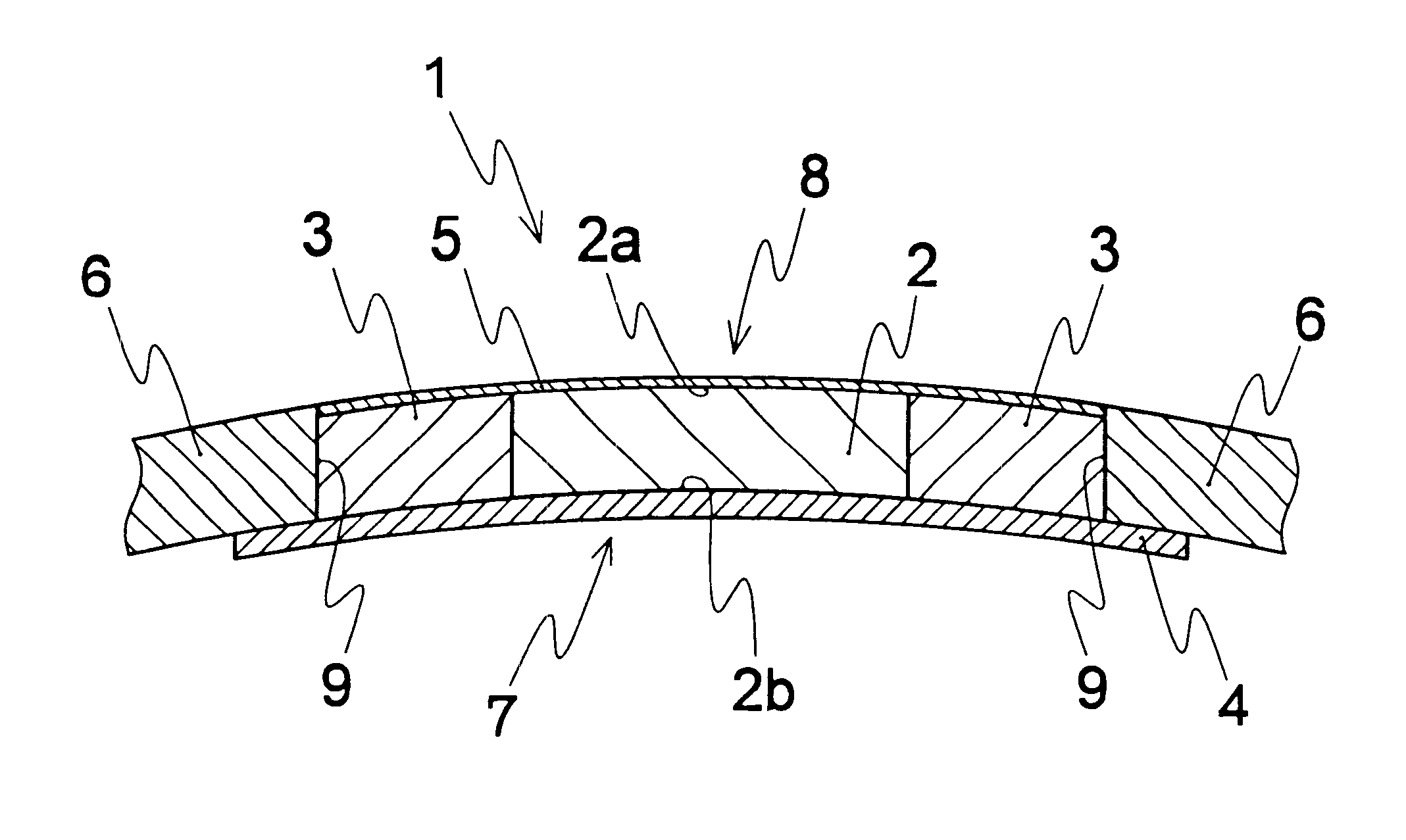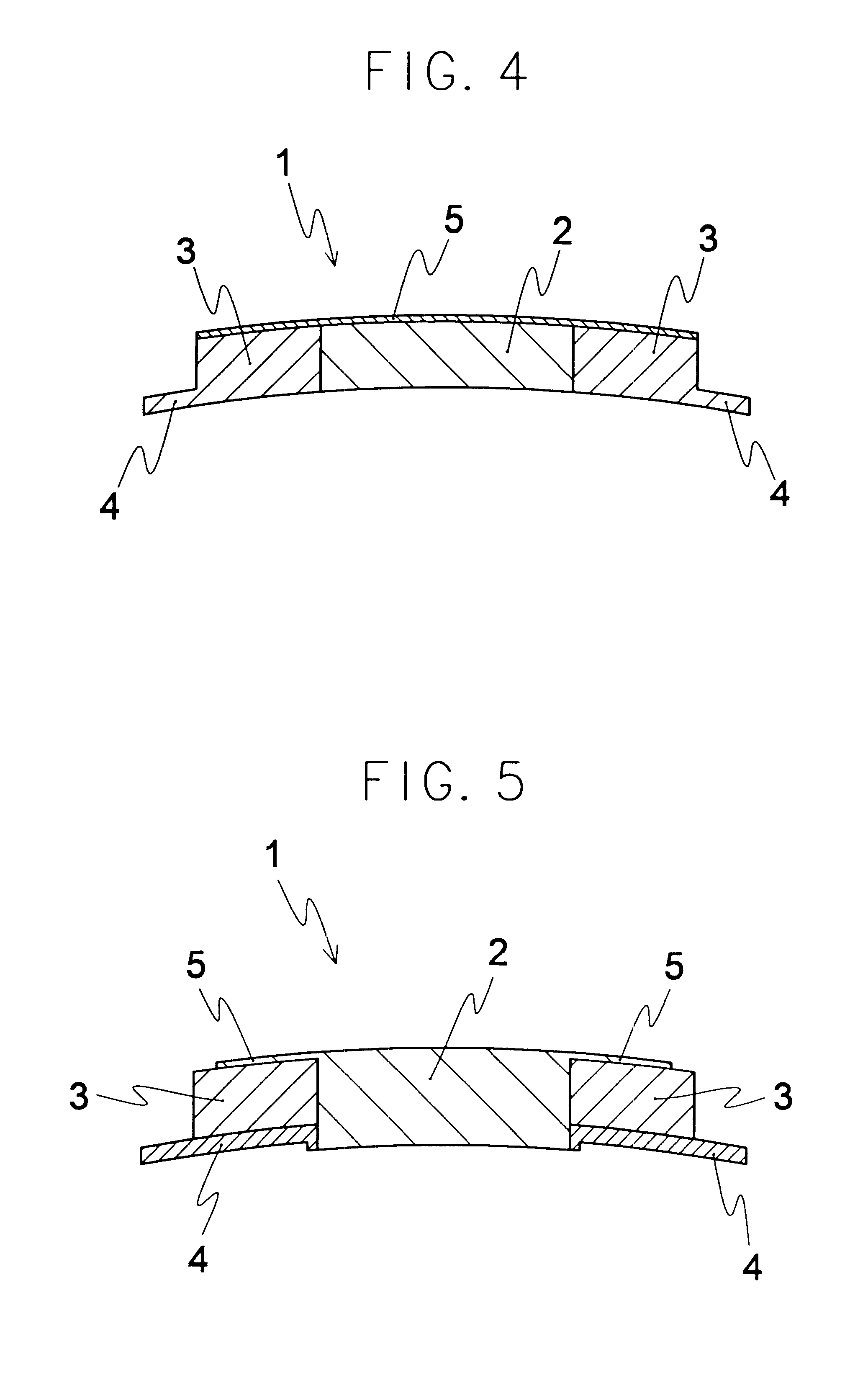Artificial cornea
a corneal and artificial technology, applied in the field of artificial cornea, can solve the problems of poor flexibility, inability to prevent leakage of aqueous humor, invasion of bacteria, and supurative endophthalmitis, and achieve the effects of reducing the stimulation of the palpebral conjunctive, preventing leakage, and facilitating the operation
- Summary
- Abstract
- Description
- Claims
- Application Information
AI Technical Summary
Benefits of technology
Problems solved by technology
Method used
Image
Examples
example 2
An artificial cornea 1 having the similar shape shown in FIG. 5 (dimension is shown in FIG. 7) was produced.
(1) Production of a Transparent Optical Element 2 and a Non-water-permeable Layer 5
A piece having a diameter of 10 mm and a thickness of 5 mm, made of polyethylene terephthalate was subjected to cutting and polishing process to give parts in which the transparent optical element 2 having a diameter of 4 mm and a thickness of 1.3 mm, made of polyethylene terephthalate and the non-water-permeable layer 5 having a diameter of 7 mm and a thickness of 0.2 mm, made of polyethylene terephthalate were integrally formed.
Furthermore, in order to easily suture, microholes for suturing having a diameter of 0.4 mm were appropriately provided at eight positions on the non-water-permeable layer 5 away from the optical element 2 (not shown in Figure).
(2) Production of a Skirt 3
Polyethylene terephthalate fabric having a thickness of 0.5 mm was cut out with a trephine into ring-donut-parts havi...
PUM
 Login to View More
Login to View More Abstract
Description
Claims
Application Information
 Login to View More
Login to View More - R&D
- Intellectual Property
- Life Sciences
- Materials
- Tech Scout
- Unparalleled Data Quality
- Higher Quality Content
- 60% Fewer Hallucinations
Browse by: Latest US Patents, China's latest patents, Technical Efficacy Thesaurus, Application Domain, Technology Topic, Popular Technical Reports.
© 2025 PatSnap. All rights reserved.Legal|Privacy policy|Modern Slavery Act Transparency Statement|Sitemap|About US| Contact US: help@patsnap.com



